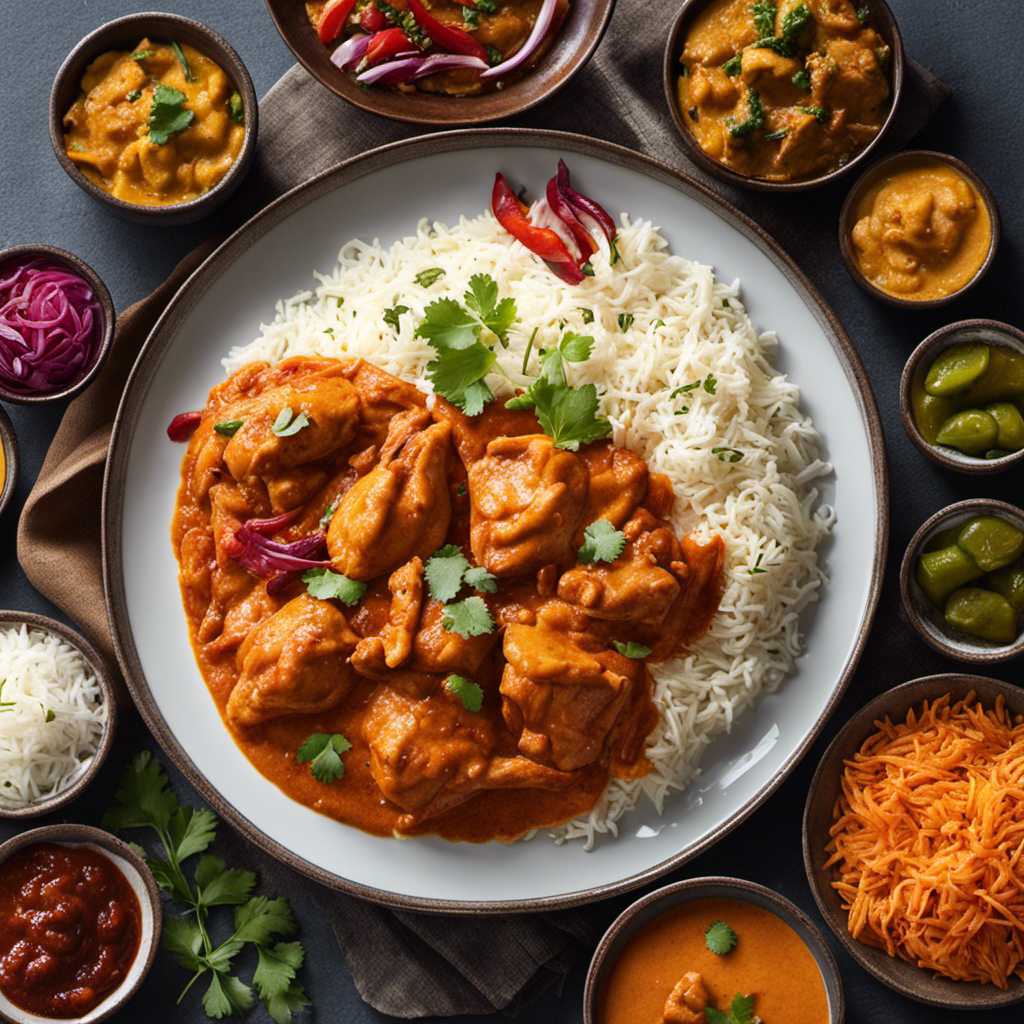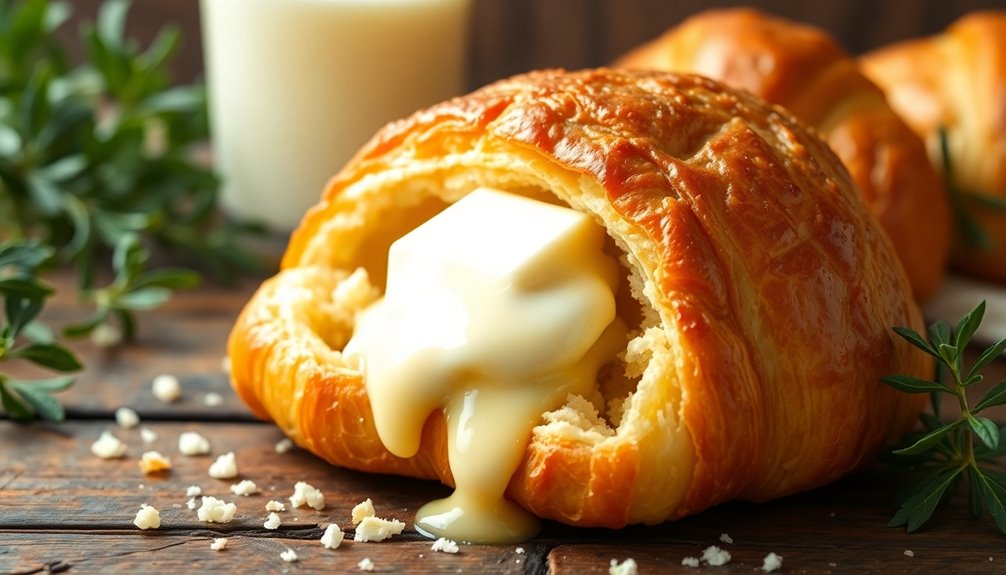As a fan of almond butter, I am constantly searching for new and delicious ways to enjoy this creamy favorite.
Whether it’s slathered on toast or blended into a smoothie, the possibilities are endless.
In this article, I will share some mouth-watering ideas on what to eat with almond butter.
From fruity combinations to energy-packed snacks, get ready to explore a world of culinary delight that will satisfy your taste buds and fuel your body.
So grab your jar of almond butter and let’s dive in!
Key Takeaways
- Almond butter can be used as a spread on whole grain bread or crackers, as a topping for fruit slices, on rice cakes or toast, mixed into yogurt or oatmeal, or as a dip for vegetables.
- Almond butter can be used in baking as a substitute for butter or oil, added to cookie or brownie batter for extra flavor, used as a filling for muffins or cupcakes, mixed into pancake or waffle batter, or used to create almond butter-based frosting or icing.
- Almond butter can be added to smoothies for creaminess and protein by blending it with fruits, vegetables, and the liquid of choice. It can also be mixed with yogurt or milk for added richness and combined with cocoa powder for a chocolate flavor. Experimentation with different flavor combinations is encouraged.
- Almond butter can be used in savory dishes by incorporating it into Asian-inspired sauces or dressings, stir-fries or noodle dishes, soups or stews for richness, as a base for marinades or glazes, or drizzled over roasted vegetables or grilled meats.
Almond Butter and Fruit
You should try spreading almond butter on sliced apples or bananas for a delicious and healthy snack.
Almond butter is a nutritious alternative to traditional peanut butter, providing a good source of protein, healthy fats, and essential vitamins and minerals.
It pairs perfectly with fruits, adding a creamy and nutty flavor to your snack.
For a quick and easy treat, simply dip apple or banana slices into almond butter and enjoy.
If you’re feeling more adventurous, you can incorporate almond butter into your breakfasts or desserts.
Try adding a dollop of almond butter to your smoothie bowls for added creaminess and protein.
You can also make almond butter granola bars by mixing almond butter with oats, nuts, and honey, then refrigerating until firm.
These bars make a satisfying and nutritious on-the-go snack.
Almond Butter Toast
I absolutely love almond butter on toast. Not only because it tastes delicious, but also because it offers several nutritional benefits.
Almond butter is packed with healthy fats, protein, and fiber. This makes it a great addition to your breakfast or snack. Plus, there are endless flavor combinations you can try to make your almond butter toast even more exciting.
Lastly, if you’re looking for alternative uses for almond butter, there are plenty of creative ways to incorporate it into your cooking and baking. From smoothies to energy balls, almond butter can add a delicious and nutritious twist to your recipes.
Nutritional Benefits of Almond Butter
The nutritional benefits of almond butter include being a good source of healthy fats and protein. It’s a versatile and delicious ingredient that can be used in various ways to boost the nutritional value of your meals.
Here are some ideas to incorporate almond butter into your breakfast routine:
-
Almond Butter Smoothie Bowls: Blend almond butter with frozen fruits, almond milk, and a handful of spinach for a nutrient-packed breakfast that will keep you energized and satisfied.
-
Almond Butter and Yogurt Parfaits: Layer almond butter, Greek yogurt, and your favorite fruits in a jar for a quick and nutritious grab-and-go breakfast option.
-
Almond Butter Toast: Spread almond butter on whole grain toast and top it with sliced bananas, a sprinkle of cinnamon, and a drizzle of honey for a delicious and balanced meal.
By exploring these almond butter breakfast ideas, you can easily incorporate this nutritious ingredient into your daily routine.
Now, let’s move on to some flavorful combinations for toast.
Flavor Combinations for Toast
To elevate your toast game, try out these flavorful combinations that will satisfy your taste buds.
One delicious option is to spread almond butter on your toast and then top it with sliced bananas and a drizzle of honey. The creaminess of the almond butter pairs perfectly with the sweetness of the bananas and the natural sweetness of the honey.
Another tasty combination is to spread almond butter on your toast and then sprinkle it with cinnamon and raisins. The nutty flavor of the almond butter complements the warm spice of the cinnamon, and the chewy raisins add a delightful texture.
These flavor combinations can also be used in smoothies to create a delicious and nutritious treat.
Transitioning to alternative uses for almond butter, let’s explore some creative ways to incorporate this versatile ingredient into your meals.
Alternative Uses for Almond Butter
One way you can incorporate almond butter into your meals is by using it as a creamy base for sauces and dressings. Here are three unique almond butter recipes that can add a delicious twist to your dishes:
-
Almond Butter Stir-Fry Sauce: Combine almond butter, soy sauce, garlic, ginger, and a splash of lime juice for a flavorful and creamy stir-fry sauce that pairs well with vegetables, tofu, or chicken.
-
Almond Butter Salad Dressing: Whisk together almond butter, apple cider vinegar, honey, and a pinch of salt for a creamy and tangy dressing. Drizzle it over a fresh salad with mixed greens, sliced apples, and roasted almonds for a satisfying meal.
-
Almond Butter Dipping Sauce: Mix almond butter, coconut milk, lime juice, and a dash of chili flakes for a creamy and slightly spicy dip. Serve it alongside spring rolls, grilled chicken skewers, or roasted vegetables for a tasty appetizer.
These alternative uses for almond butter can bring a new dimension of flavor to your meals and provide a nutritious and satisfying addition.
Now, let’s move on to the next section about almond butter smoothies.
Almond Butter Smoothie
You can easily make a delicious almond butter smoothie by blending together frozen bananas, almond butter, almond milk, and a sprinkle of cinnamon.
Almond butter smoothies are not only tasty but also packed with nutrients. Adding almond butter to your smoothies can provide a rich source of healthy fats, protein, and fiber. These nutrients help keep you feeling full and satisfied, making it a great option for breakfast or a post-workout snack.
Additionally, almond butter contains vitamin E, magnesium, and potassium, which are essential for maintaining healthy skin, boosting energy levels, and supporting muscle function. To make your almond butter smoothie even more nutritious, you can add spinach or kale for an extra dose of vitamins and minerals.
Now, let’s move on to another delicious almond butter treat – almond butter energy balls.
Almond Butter Energy Balls
These energy balls are a great snack option for those looking for a healthy and convenient way to fuel their day. Made with almond butter, they provide a delicious and nutritious boost of energy.
Here are three reasons why almond butter energy bites should be a part of your snacking routine:
-
Nutrient-rich: Almond butter is packed with essential nutrients like healthy fats, protein, and fiber. These energy balls offer a concentrated dose of these nutrients, keeping you satisfied and energized throughout the day.
-
Quick and easy: With just a few simple ingredients and minimal preparation, almond butter energy bites can be whipped up in no time. They make for a perfect grab-and-go snack that you can enjoy anytime, anywhere.
-
Versatile and customizable: You can customize these energy balls to suit your taste preferences. Add in some dried fruits, nuts, or seeds for extra flavor and texture. They can also be enjoyed alongside an almond butter smoothie bowl for a complete and satisfying meal.
Almond Butter Oatmeal
To make a delicious and nutritious bowl of oatmeal, start by cooking the oats with your choice of milk and sweetener. Oatmeal is a versatile breakfast option that can be customized with various toppings and mix-ins.
One popular way to incorporate almond butter into your oatmeal is by making almond butter overnight oats. Simply mix oats, almond butter, milk, and sweetener in a jar and refrigerate overnight for a quick and easy breakfast in the morning.
Another option is to create an almond butter smoothie bowl by blending almond butter, frozen fruit, milk, and a handful of spinach for added nutrients. The creamy texture and nutty flavor of almond butter pairs perfectly with the hearty oats, creating a satisfying breakfast that will keep you full until lunchtime.
Now, let’s move on to the next section and explore the world of almond butter pancakes.
Almond Butter Pancakes
For a fluffy and flavorful breakfast option, try adding some almond butter to your pancake batter. Almond butter not only adds a delicious nutty taste, but it also provides a host of health benefits.
Here are three reasons why you should consider incorporating almond butter into your pancake recipe:
-
Nutritional powerhouse: Almond butter is rich in healthy fats, protein, and fiber, making it a nutritious addition to your pancakes. These nutrients can help keep you satiated and provide sustained energy throughout the morning.
-
Enhanced flavor: Almond butter adds a creamy and slightly sweet taste to your pancakes, elevating their flavor profile. It pairs well with various toppings, such as fresh fruits, maple syrup, or a dollop of Greek yogurt.
-
Versatility: Don’t limit yourself to just pancakes! You can also experiment with almond butter in other breakfast treats like almond butter waffles or almond butter muffins. These options offer a delightful twist to your morning routine.
Almond Butter and Veggie Wraps
When it comes to eating healthy, wraps are a great option to consider. They offer a variety of health benefits, such as being high in fiber, low in calories, and packed with nutrients.
Additionally, wraps provide endless opportunities for flavor combinations, allowing you to create delicious and satisfying meals that cater to your taste preferences and dietary needs.
Health Benefits of Wraps
Wraps are a great option for a healthy and convenient meal with the added health benefits of almond butter. They’re not only delicious but also easy to make. Here are three reasons why wraps are a nutritious choice:
-
Versatility: Wraps can be filled with a variety of ingredients, making them customizable to suit your tastes and dietary preferences. You can fill them with veggies, lean proteins, and of course, almond butter for a flavorful combination.
-
Portability: Wraps are perfect for on-the-go meals or packed lunches. They can be easily wrapped and taken with you wherever you go, ensuring you have a nutritious meal option wherever you are.
-
Nutritional Benefits: Wraps provide a balanced combination of carbohydrates, proteins, and healthy fats. Almond butter adds a boost of protein, fiber, and essential vitamins and minerals. It’s also a great source of healthy fats, which are important for brain health and satiety.
With the endless possibilities and simplicity of making wraps, they are a great choice for a healthy and satisfying meal.
Flavor Combinations for Wraps
One way to add variety to your wraps is by experimenting with different flavor combinations.
When it comes to sandwiches, there are endless possibilities to explore. One unique combination that I highly recommend is almond butter and chocolate. The creamy and nutty flavor of almond butter pairs perfectly with the richness of chocolate.
You can spread a generous amount of almond butter onto a tortilla or wrap, and then sprinkle some chocolate chips on top. You can also add sliced bananas or strawberries for an extra burst of sweetness. The combination of almond butter and chocolate creates a delicious and indulgent wrap that is sure to satisfy your cravings.
Now, let’s move on to the next section where we will talk about another delicious way to enjoy almond butter: almond butter salad dressing.
Almond Butter Salad Dressing
You can make a delicious almond butter salad dressing by combining almond butter, honey, vinegar, and olive oil. This dressing adds a creamy and nutty flavor to any salad, making it a healthy and satisfying choice.
Here are three reasons why you should try almond butter salad dressing:
-
Health benefits: Almond butter is packed with nutrients like protein, healthy fats, and fiber. It also contains vitamin E, magnesium, and antioxidants, which are beneficial for heart health and reducing inflammation.
-
Versatility: Almond butter salad dressing can be used in a variety of dishes. It pairs well with salads, of course, but it can also be used as a sauce for almond butter pasta or to add a nutty twist to a stir fry.
-
Easy to make: This dressing requires just a few simple ingredients and takes only a few minutes to prepare. It’s a quick and convenient way to add flavor and nutrition to your meals.
Now that you’ve learned about almond butter salad dressing, let’s explore the world of almond butter dips and spreads.
Almond Butter Dips and Spreads
When it comes to creative almond butter pairings and healthy dip options, there are endless possibilities to explore.
Almond butter can be paired with fruits like apples or bananas for a sweet and satisfying snack, or with vegetables like carrots or celery for a crunchy and nutritious option.
Additionally, almond butter can be used as a base for homemade dips, such as almond butter hummus or almond butter yogurt dip, adding a creamy and flavorful twist to your favorite snacks.
Creative Almond Butter Pairings
There are plenty of delicious options to pair with almond butter. Not only can it be used as a spread for toast or a dip for fruits and vegetables, but almond butter can also add a unique twist to savory dishes. Here are three creative ways to incorporate almond butter into your meals:
-
Almond Butter Stir Fry Sauce: Mix almond butter with soy sauce, garlic, and ginger for a flavorful stir fry sauce. The nuttiness of the almond butter complements the vegetables and protein, adding a creamy richness to the dish.
-
Almond Butter Dressing: Create a tangy salad dressing by combining almond butter with lemon juice, Dijon mustard, and honey. This creamy dressing pairs well with a variety of greens and toppings, adding a nutty undertone to your salad.
-
Almond Butter in Baking: Swap out traditional nut butters for almond butter in your favorite baking recipes. Whether it’s cookies, muffins, or cakes, almond butter adds moisture and a subtle nutty flavor to your baked goods.
With its versatility and delicious taste, almond butter can be a great addition to both savory dishes and baking recipes.
Healthy Dip Options
One healthy dip option that can add flavor to your snacks is hummus. Hummus is a nutritious and versatile dip made from chickpeas, tahini, lemon juice, garlic, and olive oil. It is high in protein, fiber, and healthy fats, making it a great choice for a healthy snack.
However, if you’re looking for a unique twist on traditional hummus, you can try almond butter hummus. Almond butter adds a rich and nutty flavor to the dip, while also providing additional nutrients like vitamin E and magnesium.
To make almond butter hummus, simply replace the tahini with almond butter in your favorite hummus recipe. You can enjoy it with sliced vegetables, whole grain crackers, or as a spread in sandwiches. It’s a delicious and healthy alternative to traditional hummus!
Almond Butter Desserts
You can’t go wrong with a scoop of almond butter on top of a warm chocolate brownie. The combination of the rich, fudgy brownie and the creamy, nutty almond butter is simply irresistible. But why stop at just brownies? There are endless possibilities when it comes to incorporating almond butter into your desserts.
Here are three delicious ideas to get you started:
-
Almond Butter Cookies: Swap out traditional peanut butter for almond butter in your favorite cookie recipe. The result is a chewy, nutty treat that will please any cookie lover.
-
Almond Butter Brownies: Take your brownie game to the next level by adding a swirl of almond butter into the batter. The nutty flavor pairs perfectly with the chocolatey goodness.
-
Almond Butter Protein Bars: For a healthier option, make your own protein bars using almond butter as the base. Mix it with oats, protein powder, and your favorite mix-ins for a tasty and nutritious snack.
With these almond butter desserts, you’ll satisfy your sweet tooth while enjoying the benefits of this versatile and delicious ingredient. But if you’re looking for a quick and easy way to incorporate almond butter into your diet, keep reading about almond butter protein bars.
Almond Butter Protein Bars
If you’re looking for a healthier snack option, try making your own protein bars with almond butter as the base ingredient. Not only are they delicious, but they also provide a good source of protein to fuel your body. Almond butter is a great choice because it is packed with healthy fats, fiber, and vitamins. To get you started, here’s a simple recipe for almond butter protein bars:
| Ingredients | Instructions | Tips and Variations |
|---|---|---|
| 1 cup almond butter | In a mixing bowl, combine almond butter, protein powder, honey, and oats. Mix well until all ingredients are evenly incorporated. | Feel free to add in your favorite mix-ins such as chocolate chips, dried fruits, or nuts for added flavor and texture. |
| 1/2 cup protein powder | Press the mixture into a lined baking dish and refrigerate for at least 2 hours, or until firm. | If you prefer a chewier texture, you can bake the bars in the oven at 350°F for 10-15 minutes. |
| 1/4 cup honey | Once firm, cut into bars and store in the refrigerator for up to a week. | These bars can also be frozen for longer shelf life. |
These almond butter protein bars are not only convenient, but they are also a great way to satisfy your hunger and provide your body with essential nutrients. Enjoy them as a post-workout snack or grab one on the go for a quick energy boost. If you’re looking for more ways to incorporate almond butter into your diet, you can also try adding it to your protein smoothies or making almond butter granola bars. The possibilities are endless with this versatile and nutritious ingredient.
Frequently Asked Questions
Can Almond Butter Be Used as a Substitute for Peanut Butter in Recipes?
Yes, almond butter can be used as a substitute for peanut butter in recipes. It can be incorporated into baking and smoothies, adding a nutty flavor and a dose of healthy fats.
Is Almond Butter a Good Source of Protein?
Almond butter is a good source of protein, with 7 grams per serving. It also contains healthy fats and vitamins. Its benefits for muscle recovery make it a great addition to post-workout snacks.
Can Almond Butter Be Used as a Topping for Yogurt or Ice Cream?
Almond butter can definitely be used as a delicious topping for yogurt or ice cream. It adds a creamy and nutty flavor. Additionally, you can incorporate almond butter into smoothies or use it in baking recipes for added richness.
How Long Does Almond Butter Last Once Opened?
Almond butter, like all good things, has a shelf life. Once opened, it can last for several months if stored properly. To keep it fresh, seal tightly, refrigerate, and enjoy on anything and everything.
Can Almond Butter Be Used in Savory Dishes or Is It Primarily Used in Sweet Recipes?
Savory almond butter recipes can add depth and flavor to dishes like stir-fries, sauces, and dressings. Incorporating almond butter in cooking also offers the benefits of added protein, healthy fats, and a nutty taste.
Conclusion
In conclusion, almond butter is a versatile and nutritious food that can be enjoyed in many different ways. Whether you’re looking for a quick and healthy breakfast option, a satisfying snack, or a delicious dessert, almond butter has got you covered.
From spreading it on toast or adding it to smoothies, to incorporating it into energy balls or protein bars, the possibilities are endless. So go ahead and explore the world of almond butter, like a squirrel exploring a treasure trove of nuts.
Your taste buds and body will thank you!










